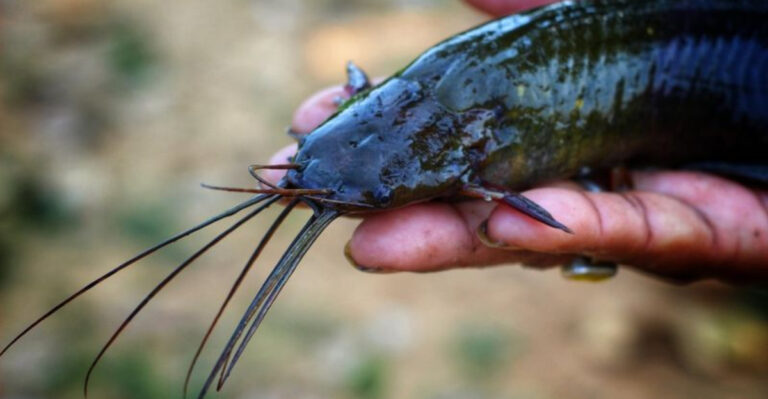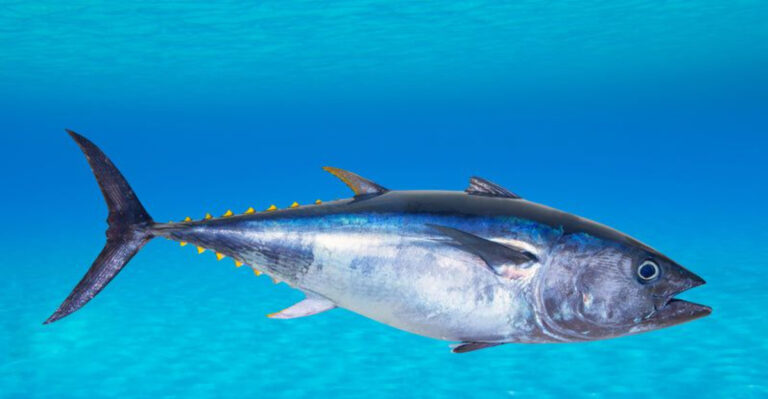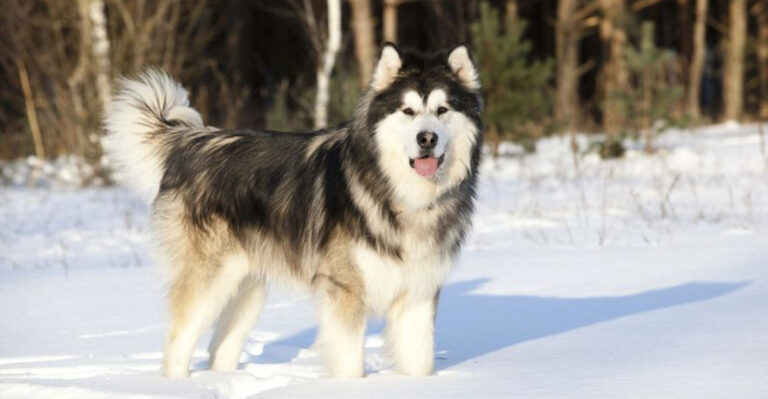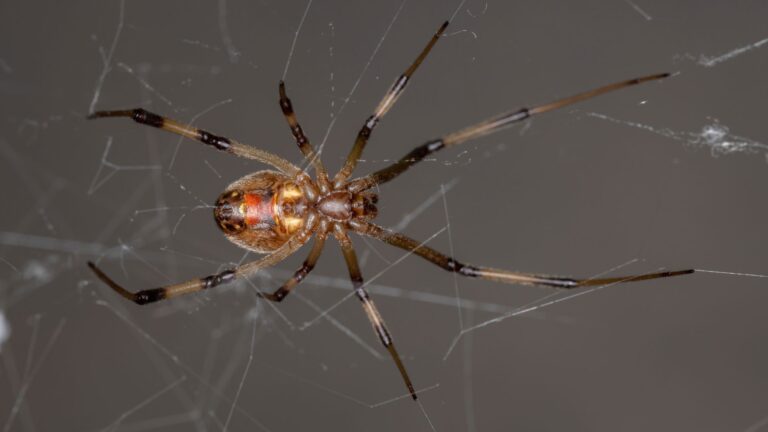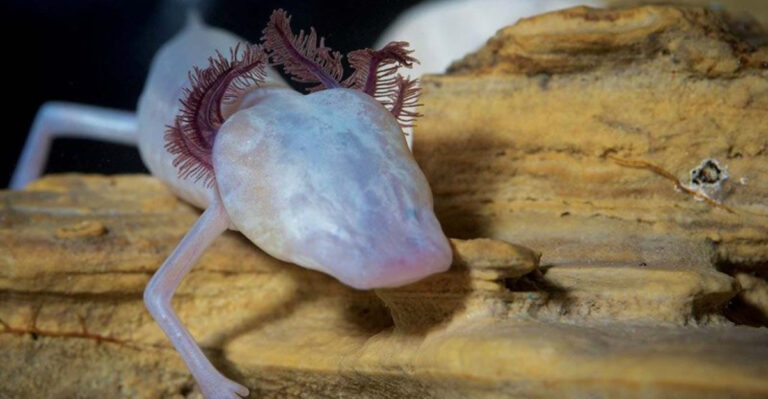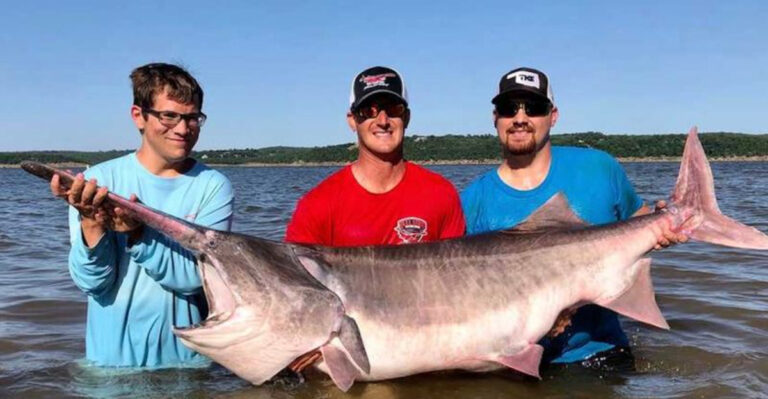Why The Marabou Stork Is Both Feared And Fascinating
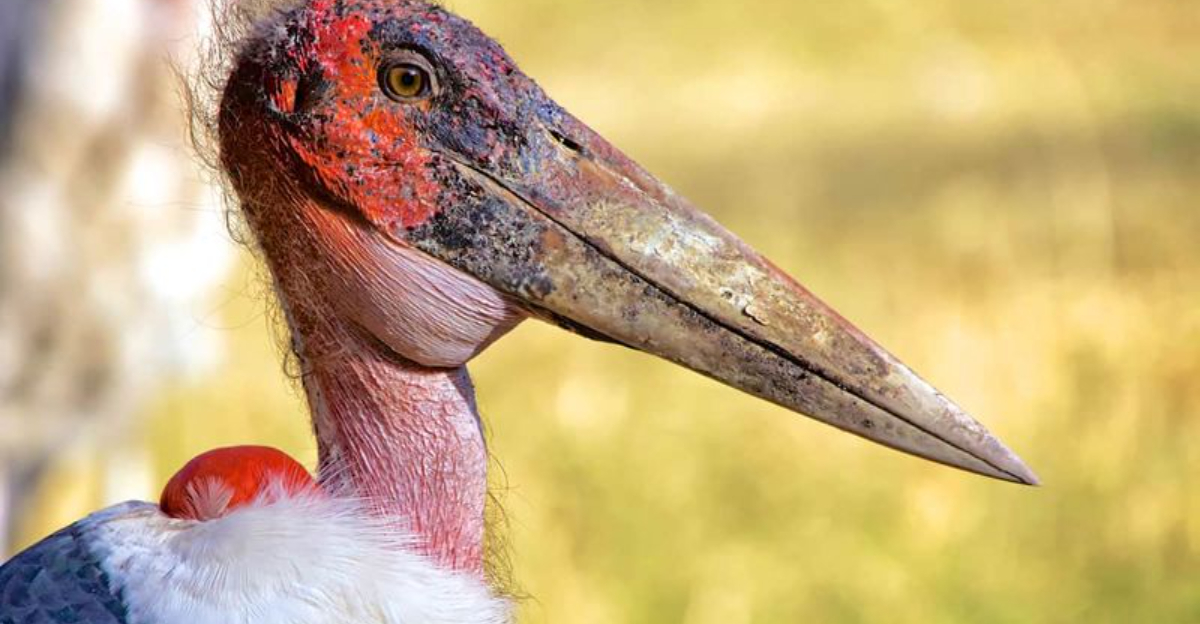
Standing nearly five feet tall with a wingspan that can stretch to almost ten feet, the Marabou stork commands attention wherever it goes.
Native to sub-Saharan Africa, this massive bird has earned nicknames like ‘undertaker bird’ and ‘nightmare bird’ due to its eerie appearance.
Despite its intimidating looks, the Marabou stork plays crucial roles in its ecosystem and possesses remarkable adaptations that have helped it survive for centuries.
Deathly Appearance

With its bald head, long neck pouch, and cloak-like wings, the Marabou stork resembles an undertaker at a funeral. The bird’s pale, scabby head lacks feathers – an adaptation that keeps it clean when diving into rotting carcasses.
Its dark wings drape around its body like a cape when standing still. Many African cultures associate these birds with death and bad omens.
Adding to its ghostly image, Marabous often stand motionless for long periods, silently watching their surroundings with an almost judgmental stare. This stillness, combined with their size and appearance, makes them truly haunting creatures.
Garbage Disposal Experts
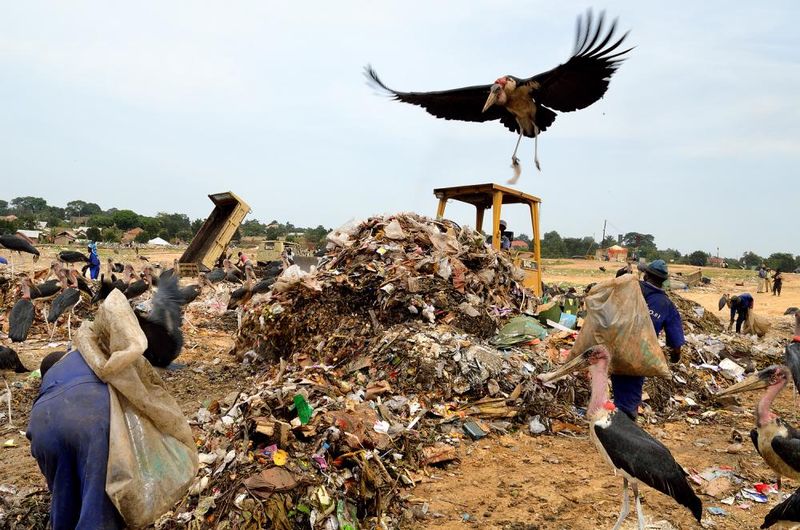
Marabou storks serve as nature’s cleanup crew, feasting on items most creatures wouldn’t touch. Their powerful beaks can break open carcasses that even hyenas struggle with, making them essential scavengers in African ecosystems.
Found hanging around landfills, fish markets, and slaughterhouses, these birds happily consume everything from dead animals to human waste. Their stomach acid is extraordinarily strong, capable of dissolving bones and killing dangerous bacteria.
Without these feathered sanitation workers, disease would spread much faster across their habitats. One adult Marabou can consume several pounds of waste daily!
Record-Breaking Wingspan
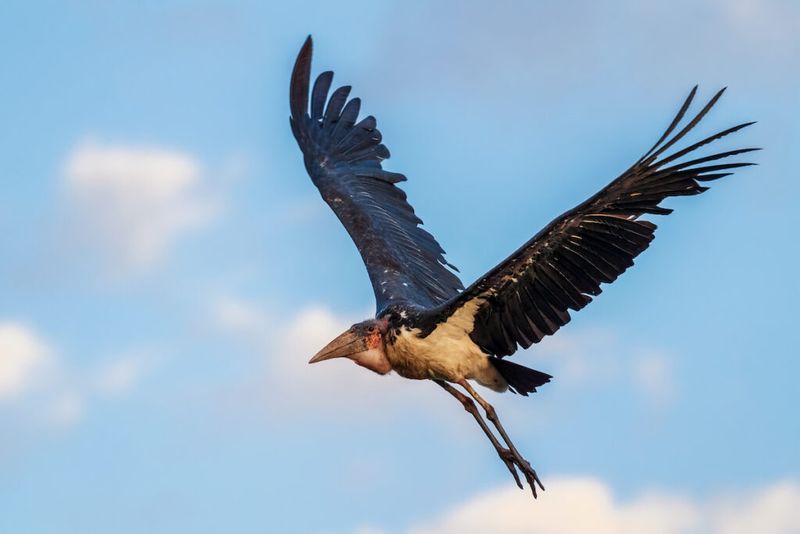
Soaring high above the African plains, the Marabou stork boasts one of the largest wingspans of any land bird. From tip to tip, their wings can stretch nearly 10 feet wide – roughly the length of a small car! These massive wings create an impressive silhouette against the sky.
Despite weighing up to 20 pounds, Marabous can ride thermal air currents with minimal effort, sometimes gliding for hours without a single wing flap.
Their wingspan rivals that of the Andean condor and albatross. When a group of Marabous takes flight together, the sight is both magnificent and slightly terrifying.
Heat-Radiating Pouches
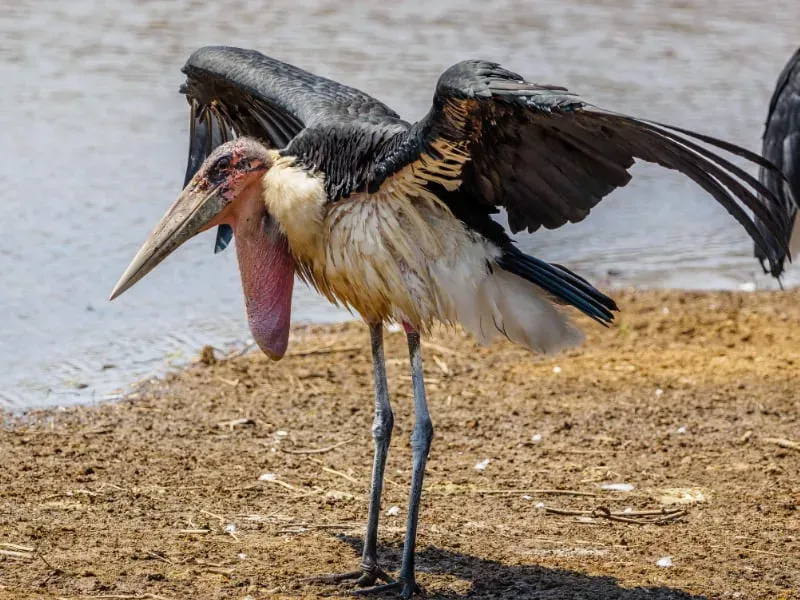
Hanging from the Marabou’s neck is a strange, fleshy pouch that serves a surprising purpose. This bizarre appendage isn’t for storing food as many assume – it’s actually part of the bird’s cooling system!
During hot African days, Marabous pump blood into these pouches, where it cools before returning to the body. The stork can also fluff up this sac when trying to impress potential mates or intimidate rivals.
Sometimes referred to as an air sac, this distinctive feature can inflate dramatically, dangling like a colorful balloon beneath its neck. Few other birds possess such an unusual natural air conditioning system.
Urban Adapters
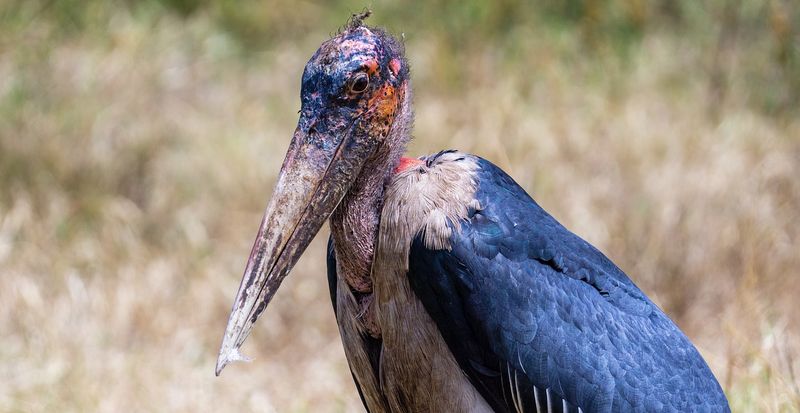
Unlike many wildlife species retreating from human expansion, Marabou storks are moving into cities across Africa. These adaptable birds build massive stick nests on water towers, cellphone masts, and tall buildings – sometimes weighing several hundred pounds!
Nairobi, Kenya has seen its Marabou population explode as the birds capitalize on abundant food waste. They’ve become such common sights that some restaurants even use them as unofficial mascots. Their success in urban environments demonstrates remarkable intelligence and flexibility.
However, not all city dwellers appreciate their new neighbors, especially when droppings rain down from nests or when the birds raid outdoor markets.
Silent Killers
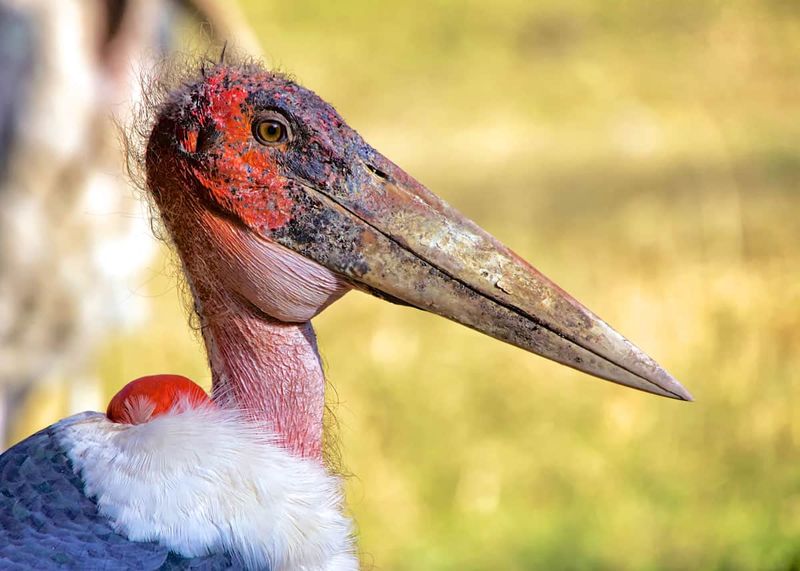
Marabou storks possess a deadly secret – they’re not just scavengers but active hunters. Armed with dagger-like bills measuring up to 14 inches long, they can strike with surprising speed and precision. Small animals like fish, frogs, insects, and even flamingo chicks become targets when carrion is scarce.
Marabous sometimes work together, with one bird distracting prey while another delivers the killing blow. Most shocking is their technique for hunting during wildfires.
These opportunistic birds position themselves at the edge of grassland blazes, stabbing small animals fleeing the flames. Their calculated hunting methods reveal an intelligence that makes them even more formidable.
Fashion Victims
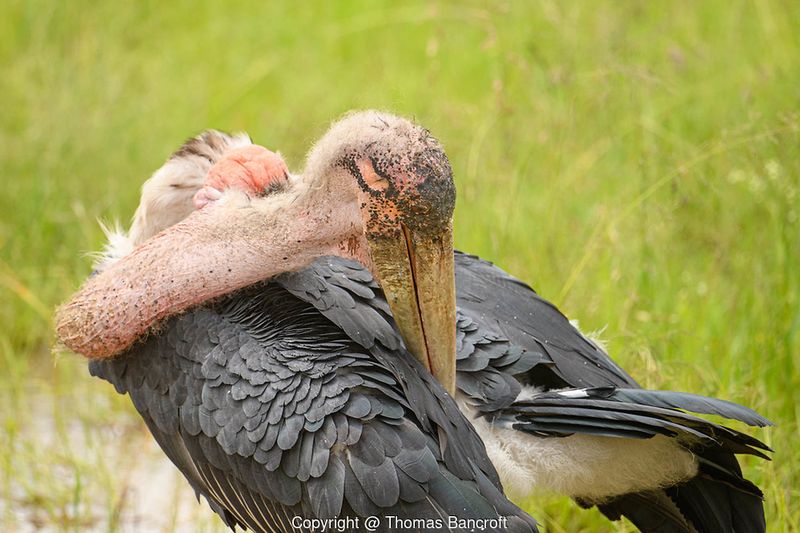
During the late 19th and early 20th centuries, Marabou storks faced a strange threat – the fashion industry. Their soft, fluffy under-feathers became highly prized for decorating hats, boas, and clothing for wealthy Europeans and Americans.
“Marabou trim” became so popular that thousands of birds were killed annually. The feathers were especially valued for their ability to be dyed vibrant colors while maintaining their delicate texture.
Fortunately, changing fashion trends and conservation efforts eventually reduced demand. Today, any “marabou” items in fashion are typically made from turkey or other bird feathers, though the name stuck. This historical exploitation highlights how human vanity often threatens wildlife.
Bizarre Bathroom Habits
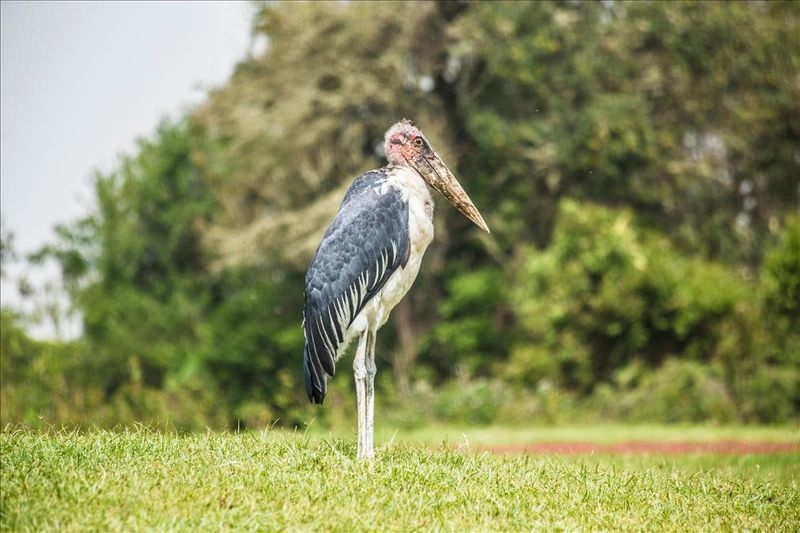
Marabou storks have developed one of the strangest cooling methods in the bird world – they poop on their own legs! This behavior, called urohidrosis, serves an important purpose in Africa’s scorching heat.
As the liquid waste evaporates from their scaly legs, it cools their blood vessels through the same principle that makes sweat effective for humans. The white streaks often visible on their legs aren’t just decoration – they’re dried excrement!
While definitely gross to human sensibilities, this adaptation helps Marabous survive temperatures that would stress other large birds. Several other stork species share this unusual habit, though the Marabou has perfected the technique.
Teamwork Makes The Dream Work
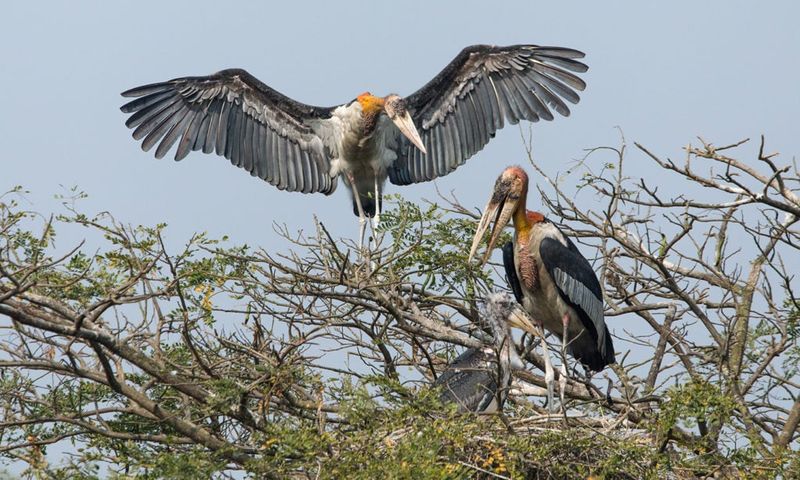
Despite their intimidating appearance, Marabou storks show surprising social intelligence. During breeding season, pairs work together with remarkable coordination to build and maintain their massive nests. Males collect sticks while females arrange them, creating structures that can be used for decades.
Both parents share incubation duties and feeding responsibilities once chicks hatch. Even more impressive is their cooperative hunting.
When targeting larger prey or competing with other scavengers like vultures, Marabous form tactical alliances. They’ll coordinate their movements to surround carcasses, with some birds creating distractions while others swoop in for choice morsels.
This teamwork reveals cognitive abilities beyond what many would expect from these prehistoric-looking birds.
Living Dinosaurs
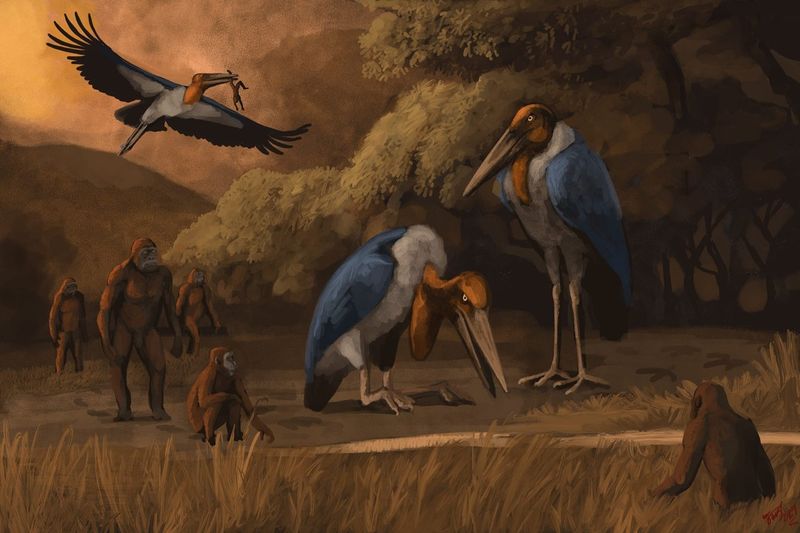
Walking alongside a Marabou stork feels like stepping back in time 65 million years. Their prehistoric appearance isn’t just coincidence – these birds are living dinosaur descendants with direct evolutionary links to the Mesozoic era.
Scientists classify birds as avian dinosaurs, with storks representing some of the oldest lineages. The Marabou’s scaly legs, reptilian movements, and massive size echo their ancient ancestry. Even their behavior recalls prehistoric times.
When threatened, Marabous perform a threat display by spreading their enormous wings, hissing loudly, and clattering their bills – tactics that would look right at home in Jurassic Park. Their ancient lineage makes them living windows into Earth’s distant past.
Myth And Folklore Figures
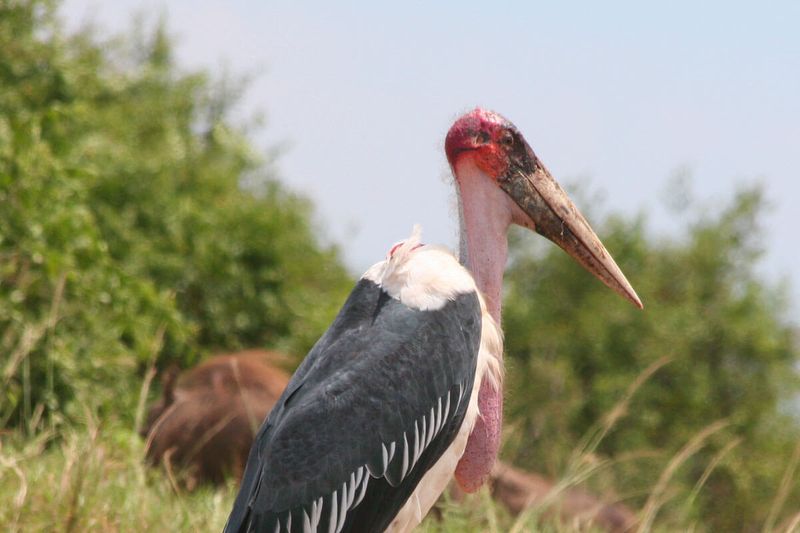
Across African cultures, Marabou storks feature prominently in folklore and spiritual beliefs. Many communities view these birds as either omens or messengers between worlds due to their scavenging nature and ghostly appearance.
In some traditions, they’re believed to carry souls to the afterlife. Other stories cast them as transformed witches or embodiments of ancestors watching over the living.
The Marabou’s habit of standing motionless for hours, seemingly watching human activities, has fueled beliefs that they possess supernatural awareness.
Some communities leave offerings for these birds during ceremonies, believing they can influence fortune. These cultural connections have helped protect Marabous in regions where other wildlife faces persecution.
Surprising Intelligence
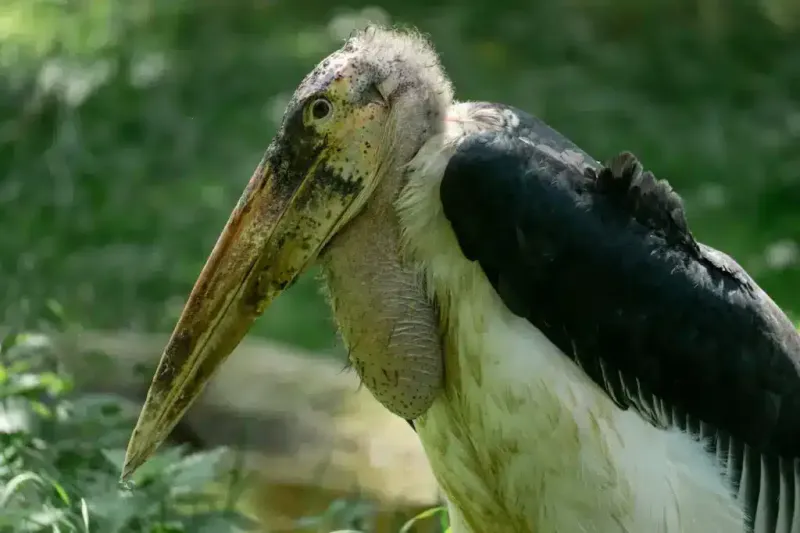
Behind the Marabou’s vacant stare lies a surprisingly clever mind. These birds demonstrate problem-solving abilities that challenge our understanding of avian intelligence.
Researchers have observed Marabous learning to predict garbage truck schedules in cities and following specific human activities associated with food. They quickly adapt to new food sources and remember reliable feeding locations for years.
Their spatial memory allows them to navigate between seasonal feeding grounds across vast distances. Most impressive is their tool usage – Marabous have been documented using sticks to trigger animal traps to steal bait and dropping hard-shelled prey onto rocks to break them open. This cognitive flexibility helps explain their success in rapidly changing environments.
Critically Important Ecosystem Engineers
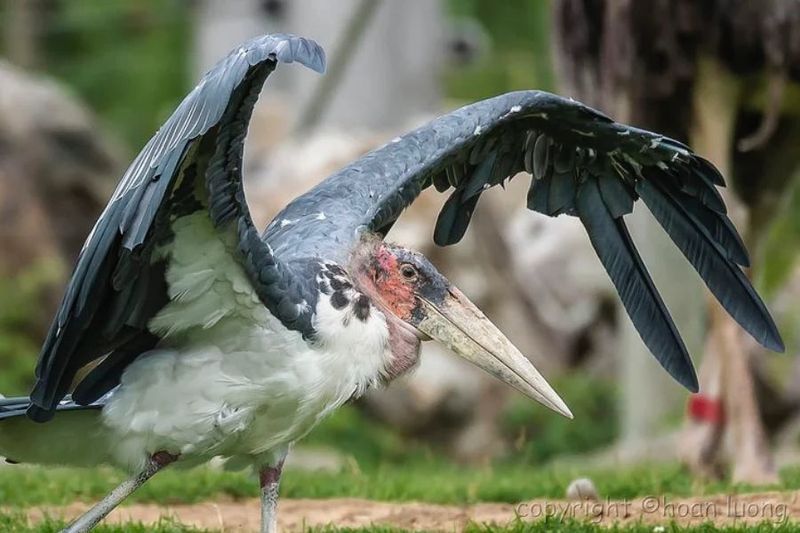
Far from being mere scavengers, Marabou storks function as crucial ecosystem engineers across African landscapes. By consuming carcasses and waste, they prevent the spread of diseases like anthrax, botulism, and cholera that could devastate wildlife populations.
Their droppings serve as nutrient transporters, enriching soil around roosting sites with nitrogen and phosphorus. This fertilization creates microhabitats where certain plant species thrive.
Even their massive nests benefit other creatures – small birds, reptiles, and mammals often move into the lower portions of Marabou nests for protection.
A single Marabou colony can process tons of organic waste annually, making them unsung heroes of ecosystem health despite their unappealing appearance.

